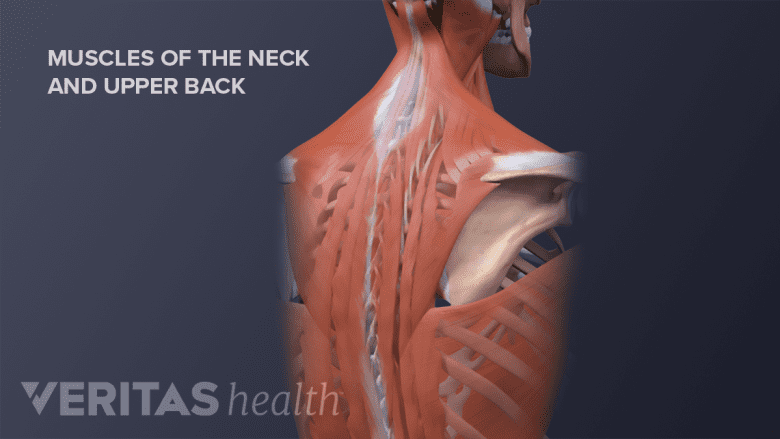Neck exercises are a common part of almost any treatment plan for neck pain. A typical neck exercise program will consist of a combination of stretching and strengthening exercises, aerobic conditioning, and possibly trigger point exercises.
In This Article:
- Neck Exercises for Neck Pain
- Neck Stretches
- Neck Strengthening Exercises
- Trigger Point Exercises for Neck Pain
- 3 Easy Neck Exercises for Neck Pain Video
Benefits of Neck Exercises

Neck exercises aim to strengthen the structures of the cervical spine, reducing pain and increasing mobility.
When neck, chest, and upper back muscles become weakened, tightened, and/or elongated, the shoulders can become rounded and the head sags forward. This poor posture in turn puts more stress on the cervical spine’s facet joints and intervertebral discs, as well as the muscles and ligaments.
See Neck Muscles and Other Soft Tissues
Poor posture with the head too far forward may lead to chronic or recurrent neck pain that can also be accompanied by stiff joints, upper back pain, shoulder blade pain, and headaches. Fortunately, a neck exercise program may be able to help address most of these symptoms as follows:
Neck stretches
Flexibility and stretching exercises can expand or preserve the range of motion and elasticity in affected cervical (neck) joints, and thus relieve the stiffness that accompanies pain. As a general rule, neck stretching is best done every day, and some stretches can be done several times a day.
See 4 Easy Stretches for a Stiff Neck
Neck strengthening

Strengthening exercises help maintain a supported neck posture.
Specific strengthening exercises can help maintain improved posture, which in turn can lessen or eliminate recurrent flare-ups of pain. As a general rule, neck strengthening exercises should be done every other day to allow muscles time to repair themselves.
Aerobic conditioning

Walking is great aerobic exercise for beginners.
Aerobic exercise, commonly called “cardio,” is fueled by a steady intake of oxygen and keeps the heart rate and breathing levels elevated for the duration of the workout. Aerobic exercises increase blood flow to the muscles and soft tissues of the neck and upper back, which can help loosen the muscles and increase range of motion. In addition, after about 30 or more minutes of aerobic exercise, the body’s natural painkillers—called endorphins—are released and can help reduce neck pain.
Aerobic exercise can be done every day. Some good options include using a treadmill, stationary bike, or an elliptical machine, as well as an upper body ergometer or arm bike. For someone who has not done aerobic conditioning in a while, going for a brisk walk can be a good start.
See Techniques for Effective Exercise Walking
In addition to helping provide relief for neck pain, these exercises can also help prevent future recurrences of neck pain by maintaining a strong and flexible neck that naturally holds better posture.
How to Get the Most Out of Neck Exercises

Applying heat therapy to the neck prior to exercise can help loosen the muscles.
Depending upon the specific diagnosis and pain level, different exercises may be recommended for neck pain. It is important for patients to seek a cervical spine specialist who is trained to evaluate neck pain and develop an individualized exercise program.
If the patient’s neck hurts too much to do neck exercises, other treatments may be recommended first, such as medications to help reduce the pain enough for the neck to start moving. Some other tips that may alleviate pain and make the exercises more comfortable include:
- Prior to exercise, apply a heating pad to warm up stiff muscles and joints and make it easier to stretch.
- After exercise, apply a cold pack (or frozen bag of peas wrapped in a towel) to reduce inflammation in the joints and muscles.
If a neck exercise feels painful, it should either be modified or discontinued. A medical professional can help ensure that neck exercises are done in a manner that does not cause pain.

